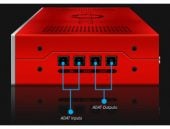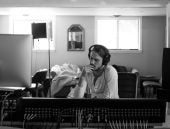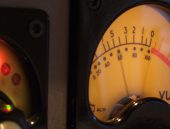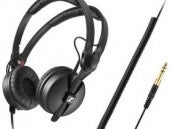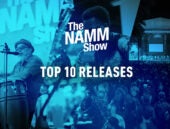Studio & Recording
-
Heads up if you’re an avid, ambitious user or producer working from a home studio. In this blog, we offer you a number of suggestions that can help you expand your current audio interface. If you’re thinking about upgrading, don’t sell it just yet!
-
Headphones are the ideal mixing tool. Any noisy neighbours are silenced, the acoustics of your studio space no longer matter, and you can hear all those little hidden details of the audio. So, if headphones are so great, why do professional studios still use monitor speakers? Is there something wrong with mixing using headphones? In this blog, we explain it all!
-
By making a few smart choices when it comes to tweaking the dynamics, any producer or sound technician can pull more impact out of their mix. Here, we offer 5 invaluable volume-boosting tips, and no – none of them involve turning the volume up.
-
We wouldn’t be surprised if it’s one of the most frequently googled questions: “What are the differences between the various Sennheiser HD 25 headphones?” Sennheiser cleaned up the series a while ago, so it’s about time we put together a clear overview of the differences and similarities between the older and newer versions of this iconic range of headphones.
-
Most people never even think about vocal microphone hygiene, which is okay as long as you’re the only one using the mike. If not, it’s important that you clean your vocal microphone after use to prevent one singer from passing their germs on to the next. In this humble blog, I’ll explain how you can easily clean a microphone yourself.
-
If your current set of studio monitors isn’t able to deliver the deepest bass frequencies or if you’ve been noticing that your productions sound a little too boomy in rooms other than your own studio, then it’s probably time that, rather than upgrade to a pair of bigger monitors, you expand your set-up with a dedicated studio subwoofer. Read on to find out whether a sub is a solid investment for you and how you can optimally set one up.
-
This might sound familiar: you’re at home trying to record audio using an audio interface, a microphone and some kind of recording software. The signal input meters of the software are barely moving so you turn up the gain, only to then sing one or two loud notes and be immediately confronted with the signal clipping as if possessed by the devil himself. If that does indeed sound familiar, you’ve no doubt asked yourself (and the internet apparently): how loud should I record audio?
-
In the music industry, it can be pretty difficult to get things done. With a long schedule of items to accomplish, productivity and a strong work ethic can often be extremely hard to obtain. In his work as a marketing manager for Moon Jelly Agency for multiple artists it’s Guest blogger Jeroen‘s duty to make sure all the requests of labels, events and the media are taken care of by the artists without them getting overwhelmed by the amount of tasks. A strong work ethic and an efficient workflow are key. So, in this article, we’re going to discuss how to improve your work ethic so that you can achieve your ambitions.
-
Guest blogger Guy Burton shares some points to consider before diving head first into the diverse universe of iPad music apps.
-
Guest blogger Guy Burton asks us to worry less about the technical details or equipment specifications, and focus on finding gear that fits your workflow, your space, and your personality.
-
If you’ve spent the last couple of months practising to sing as perfectly as a real popstar, then I’ve got good news and bad news for you. The bad news is that you spent all that time honing ad-libs for nothing, but the good news is that you can actually buy pitch-perfect vocals! Granted, I’m overstating things a little here, but the question stands: is using pitch-correction software like Auto-Tune the invention of the century, or is it just cheating? Let’s dive into the matter and see what kind of exciting stuff you can do using pitch-correction software like Antares Auto-Tune, Celemony Melodyne and Zynaptiq Pitchmap.
-
Ghost production is something that is often frowned upon within the general EDM community. But with artists in other genres considering it to be a routine part of the music business, Guest Blogger Jeroen Hillebrand from Moon Jelly Agency decided to take a look at how being a ghost producer can benefit your career in order to raise funds to achieve your ambitions. At the end of this article, the aim is to remove part of the stigma surrounding ghost production and to teach you methods of making money from it. And for those of you who are unaware, ghost production is essentially an agreement in which somebody pays a producer to create a track, and release under their own name. Typically, it’s done in the form of a flat fee.

